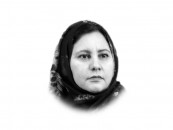Raise those fees
A healthy, sustainable university is one of the most important investments for our future

The writer is a Howard Hughes Medical Institute professor of biomedical engineering, international health and medicine at Boston University.
He tweets @mhzaman
It is not hard to figure out why the infrastructure is in such a state of disrepair. Across the world, the cost of education, particularly in sciences and engineering has increased. This is in part due to inflation and in part due to the expensive instruments needed for a cutting-edge education. Not only do we need to have the instruments in the first place, we also need constant repair and upkeep, an endeavour that itself is fairly expensive. Given that the technology needed is almost always imported, with hefty fees, the cash needed by each department to stay at the leading edge is not insignificant. Hiring and retaining quality instructors, researchers and technicians is also a pricey pursuit.
The cash flow needed for creating and sustaining a quality programme of high standards can come from only two sources: government support and tuition fees. While the government support has indeed increased over the years, it falls far short of what is needed. Higher Education Commission funds are also often unreliable and not able to match the rate at which instruments need to be repaired, refurbished and purchased altogether. These funds are often also not discretionary and come with plenty of bureaucratic red tape and constraints.
This takes me to my main point — the tuition fees. The tuition fees in our public engineering institutions are woefully low. They range from Rs4,000 to Rs6,000 a month — or an average of Rs40,000-60,000 per two semesters. Compared to the real cost of education, this is awfully low and simply not going to be enough to sustain a top-level programme. However, we must also recognise that tuition costs need not be such that education becomes inaccessible. For some, including many I personally know in my circle of family and friends, the current tuition fee does not even register as an expense, and for others it is enormously high. The balance therefore must come from a tiered approach, whereby the tuition fee itself is high (or certainly higher than what it is) but a stronger and a fairer scholarship and financial aid mechanism is established. Such a mechanism would make education completely free for those who qualify on merit but are unable to afford anything, and for others it would be based on their ability to pay. This tiered approach, that balances need and financial aid, is not only consistent with the best practices at leading institutions in the world, it is also the only way for our institutions to remain relevant and solvent.
Some private institutions in Pakistan have created similar financial aid models, and have shown successfully that they can reach a broader, more diverse and intellectually richer group of students. Similar models are also needed at our public institutions where the cost of labs, instrumentation and infrastructure are substantial. While any system can be gamed, and there are some who will try to game the system, that is hardly the reason not to create a good initiative. There are best practices from across the world that can guide us to create a programme that is both accessible and closer to the true cost. I am all for accessible education, which in the perfect world should be free for all. But in our world where the tax base is non-existent, where the education expenditure remains bizarrely and woefully low, universities have to create better models to offer quality education to all who qualify. A healthy, sustainable university is one of the most important investments for our future.
Published in The Express Tribune, January 1st, 2018.
Like Opinion & Editorial on Facebook, follow @ETOpEd on Twitter to receive all updates on all our daily pieces.














COMMENTS
Comments are moderated and generally will be posted if they are on-topic and not abusive.
For more information, please see our Comments FAQ